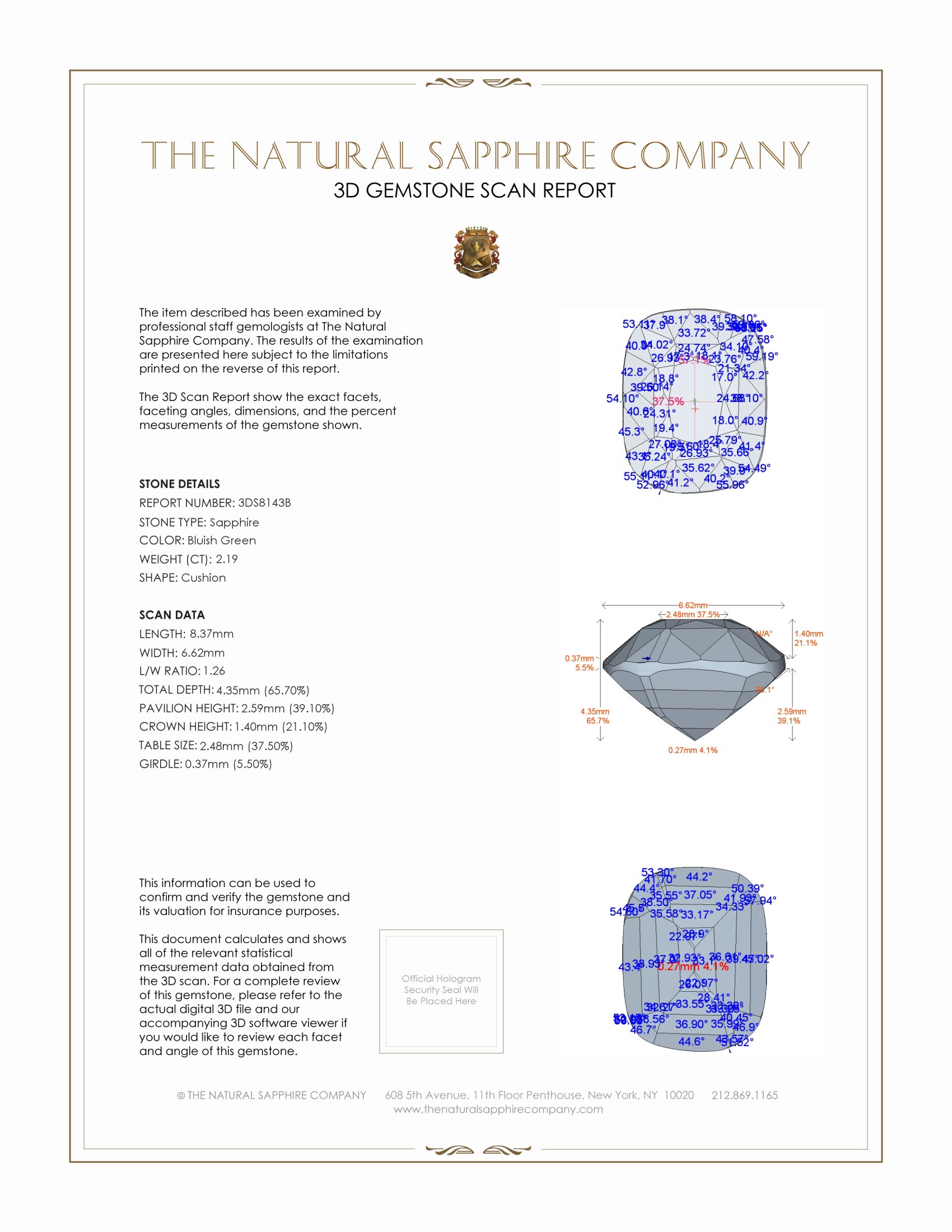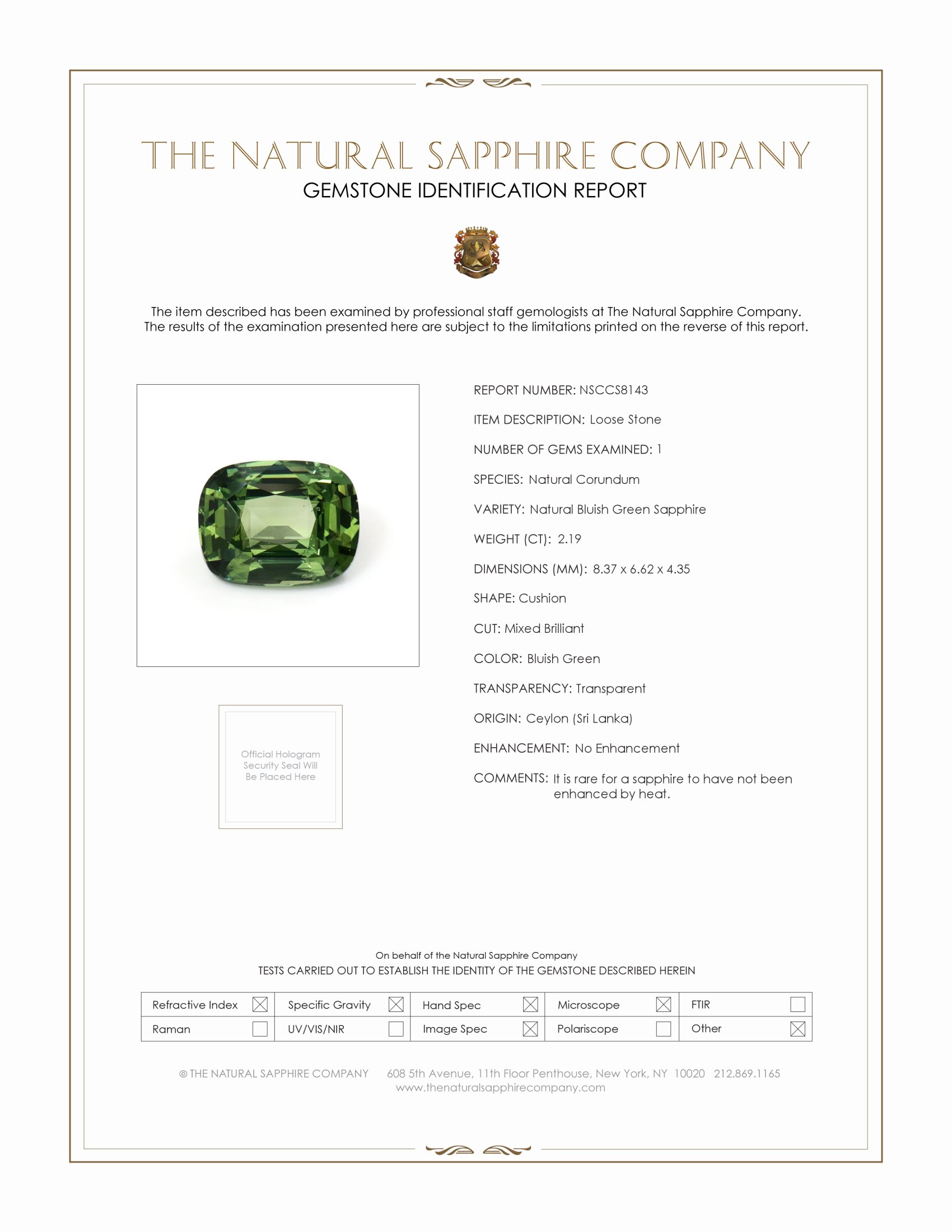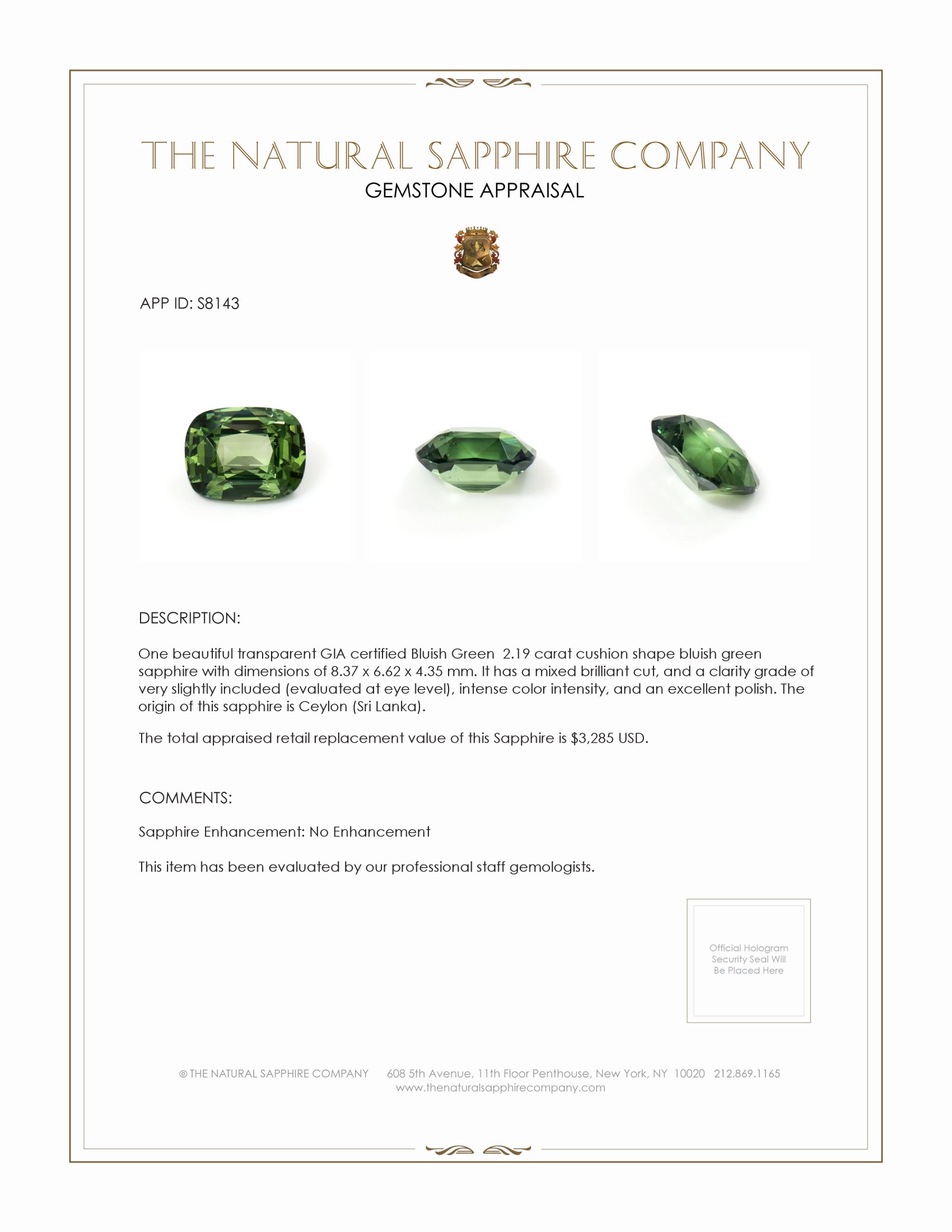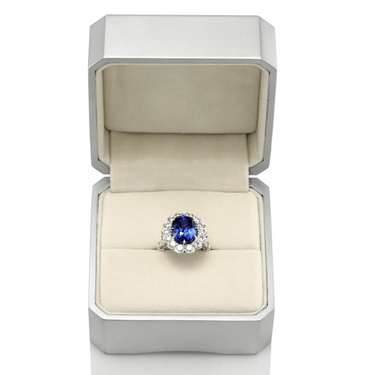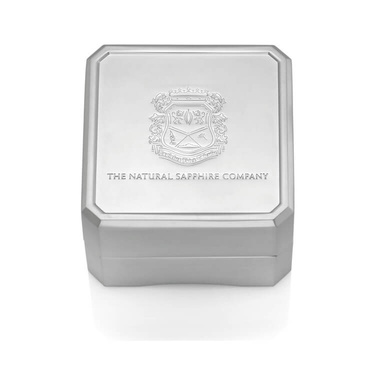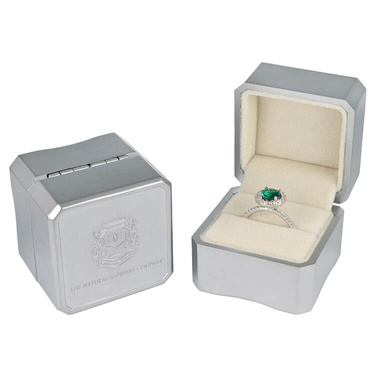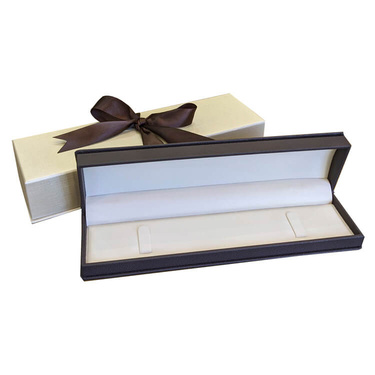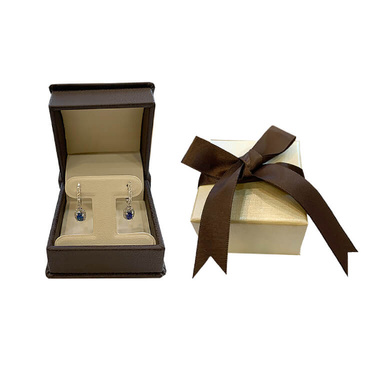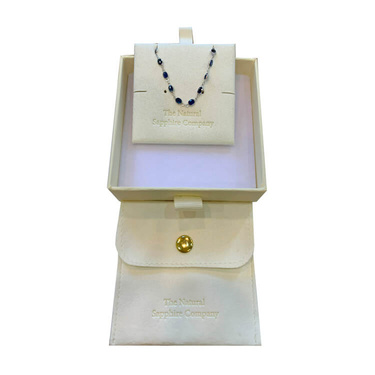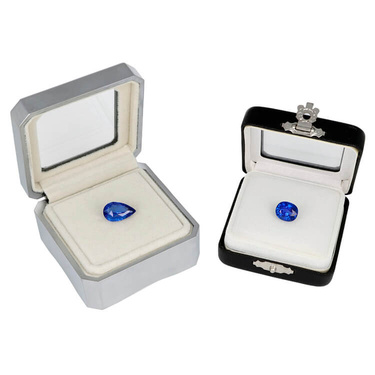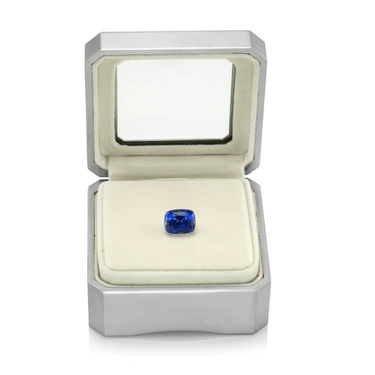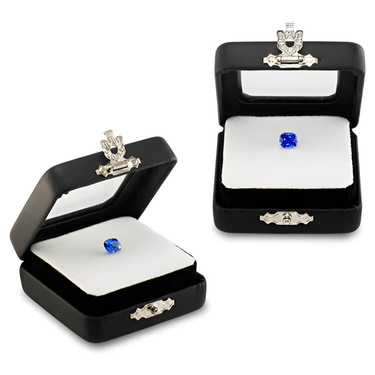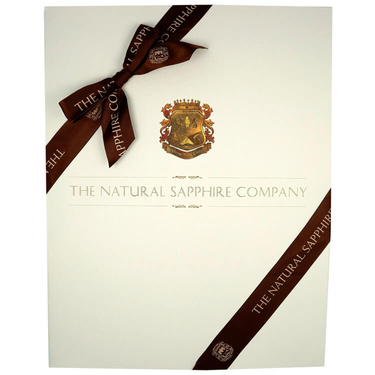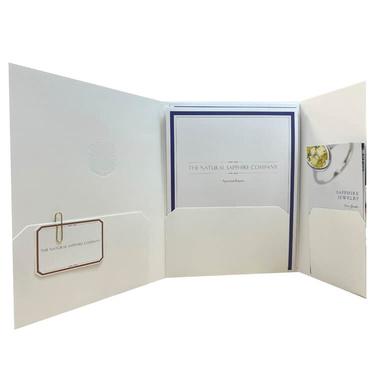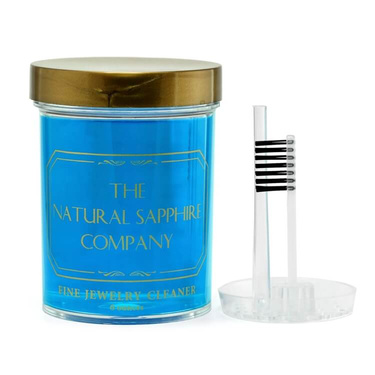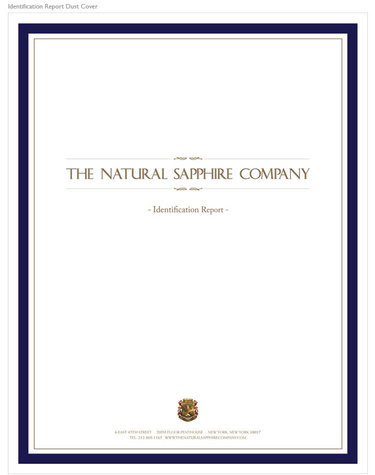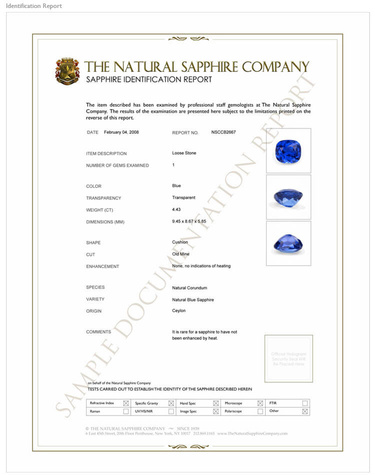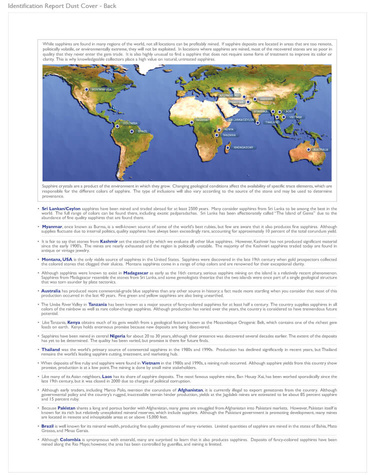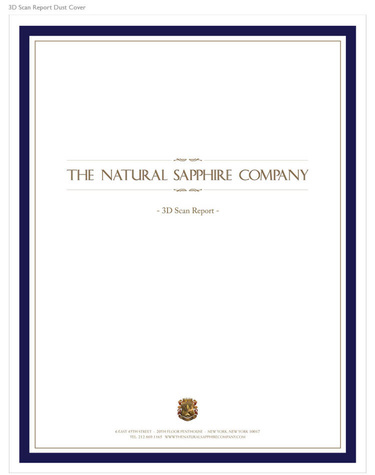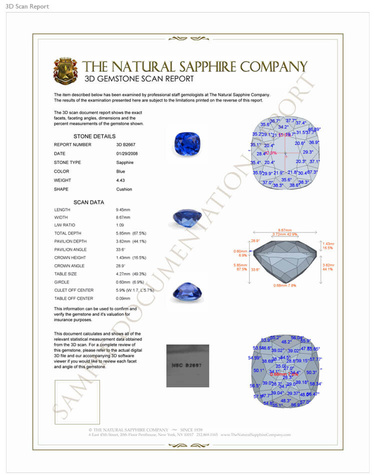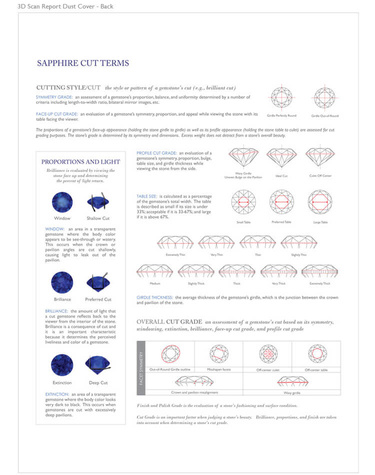- Stone16
- Reports4
-cushion-green-sapphire-2.2000-cts-s8143-1.jpg?d=200x200&v=20230913085205)
-cushion-green-sapphire-2.2000-cts-s8143-1.jpg?d=200x200&v=20230913085205)
-cushion-green-sapphire-2.2000-cts-s8143-lifestyleimage-1.jpg?d=200x200&v=20230915064901)
-cushion-green-sapphire-2.2000-cts-s8143-lifestyleimage-2.jpg?d=200x200&v=20230918075608)
-cushion-green-sapphire-2.2000-cts-s8143-lifestyleimage-3.jpg?d=200x200&v=20230918075608)
-cushion-green-sapphire-2.2000-cts-s8143-lifestyleimage-4.jpg?d=200x200&v=20230918075608)

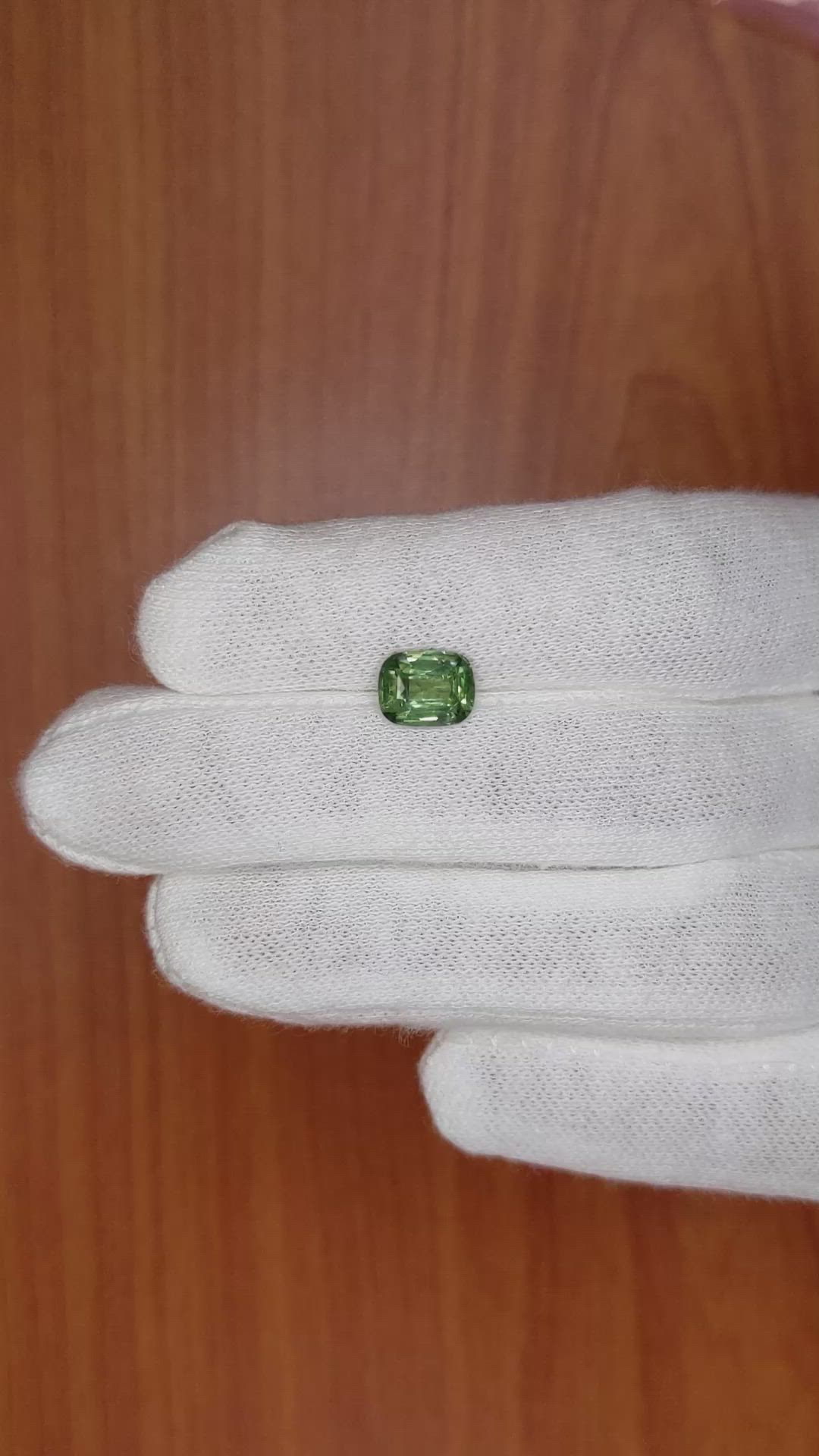




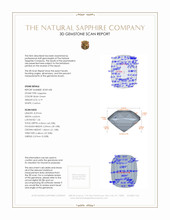

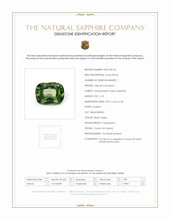
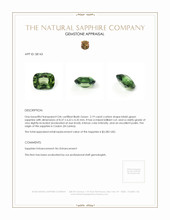
2.19 Ct. Bluish Green Sapphire from Ceylon (Sri Lanka)
This loose stone is available to ship now
Item ID: | S8143 |
|---|---|
Dimensions (MM): help | Length: 8.37 Width: 6.62 Height: 4.35 |
Weight: | 2.19 Ct. |
Color: help | Bluish Green |
Color intensity: help | Intense |
Clarity: help | Very Slightly Included |
Shape: help | Cushion |
Cut: | Mixed Brilliant |
Cutting style: | Faceted |
Enhancements: help | No Enhancement |
Origin: help | Ceylon (Sri Lanka) |
Per carat price: help | $1,500 |
This 2.19 carat cushion shape sapphire from Ceylon, offered by The Natural Sapphire Company, is a study in exacting lapidary control and natural character, with dimensions of 8.37 by 6.62 by 4.35 millimeters and a calculated depth of approximately 58 percent, proportions that bridge the requirements for intense color retention and lively light return. The gem was cut in a mixed brilliant style, with a precisely faceted crown that employs modified brilliant facets to maximize table scintillation, and a pavilion that balances brilliant and step elements to concentrate color through the pavilion and reflect contrasting flashes back through the crown. The overall polish is excellent, each facet junction crisp and well executed, which enhances internal reflectance and ensures that the stone reads as transparent and bright in hand. The color is intense, a bluish green hallmark of Ceylon sapphire material that indicates a specific interplay of iron and trace elements, and the stone is certified as having no enhancement, a factor that preserves its natural optical properties and long term stability.
The inclusions present in this sapphire are subtle, yet they form an unmistakable signature that distinguishes this particular gem from otherwise similar material, the clarity is graded as very slightly included, evaluated at eye level, which means inclusions are minimal to the naked eye but become diagnostic under magnification. Under 10 times loupe inspection, you will observe a fine network of silk, composed of extremely thin rutile needles, distributed in a slightly radiating arrangement from a confined growth boundary near the pavilion, these needles are not dense enough to create haze, rather they act as micro reflectors that break light into delicate internal flash, producing a layered depth that enhances both the bluish and green components of the body color. Interspersed among the silk are a few isolated mineral crystals and tiny negative crystal cavities, their faceted surfaces and voided edges catching light intermittently, these minute inclusions create pinpoint highlights and selective absorption, which when paired with the mixed cut, yield a dynamic internal pattern that shifts with movement and viewing angle.
What sets this stone apart is how the cutter oriented the faceting plan to work with, not against, the inclusion architecture, the pavilion angles and crown facet sizes were chosen to channel light through the areas of concentrated silk and tiny crystal pockets, producing localized zones of deeper saturation adjacent to brighter reflective windows. This produces a signature appearance that reads as a constellation of brighter facet windows framed by a deeper bluish green field, a trait that is particularly attractive in jewelry applications where the gem is set with open back or halo styles that allow viewing through the pavilion. The polish quality preserves these effects, minimizing surface diffusion and maintaining sharp facet reflections so that the inclusion driven optical phenomena remain crisp. For the technically minded buyer, this stone represents a rare convergence of untreated origin, judicious cutting proportions, and a diagnostic inclusion suite that together confirm provenance and natural formation history, while delivering the visual complexity that collectors and connoisseurs value.

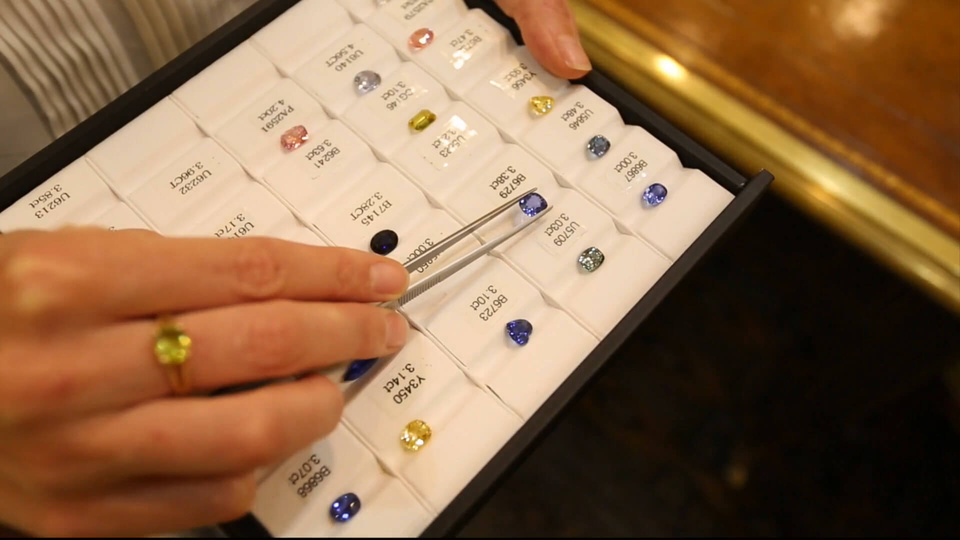



-cushion-green-sapphire-2.2000-cts-s8143-1.jpg?d=750x750&s=nsc&v=20230913085205)
-cushion-green-sapphire-2.2000-cts-s8143-lifestyleimage-1.jpg?d=750x750&s=nsc&v=20230915064901)
-cushion-green-sapphire-2.2000-cts-s8143-lifestyleimage-2.jpg?d=750x750&s=nsc&v=20230918075608)
-cushion-green-sapphire-2.2000-cts-s8143-lifestyleimage-3.jpg?d=750x750&s=nsc&v=20230918075608)
-cushion-green-sapphire-2.2000-cts-s8143-lifestyleimage-4.jpg?d=750x750&s=nsc&v=20230918075608)

